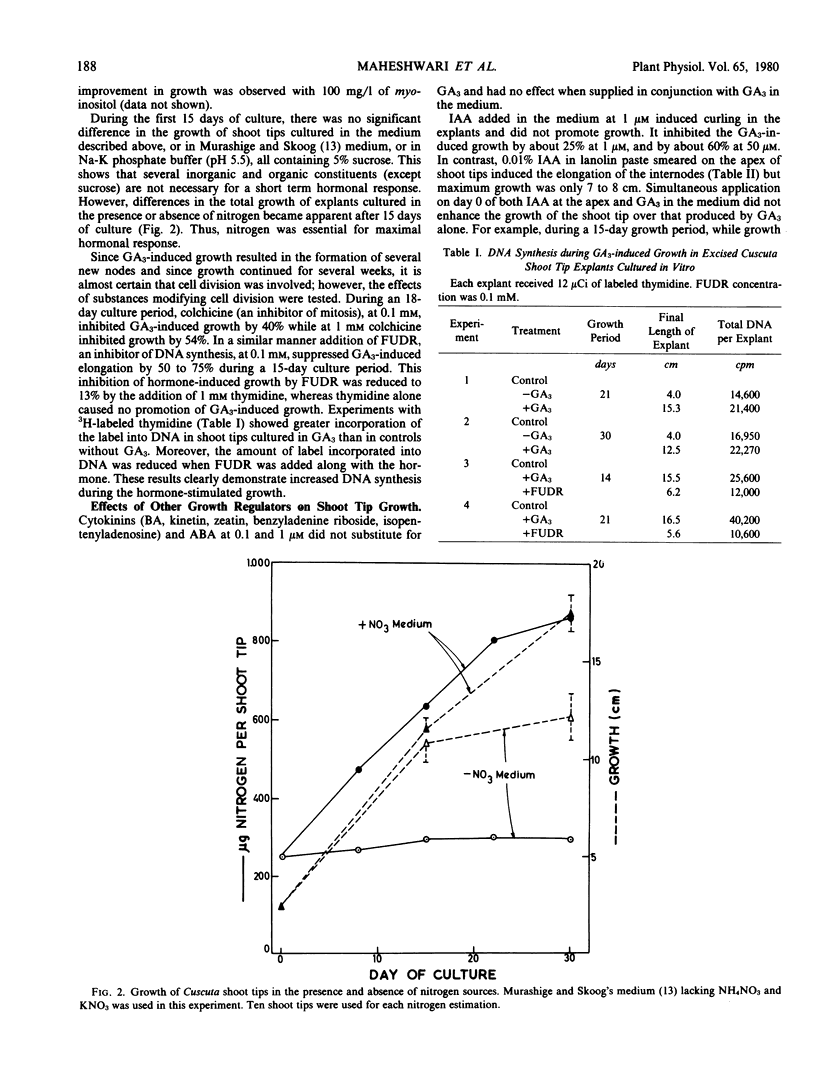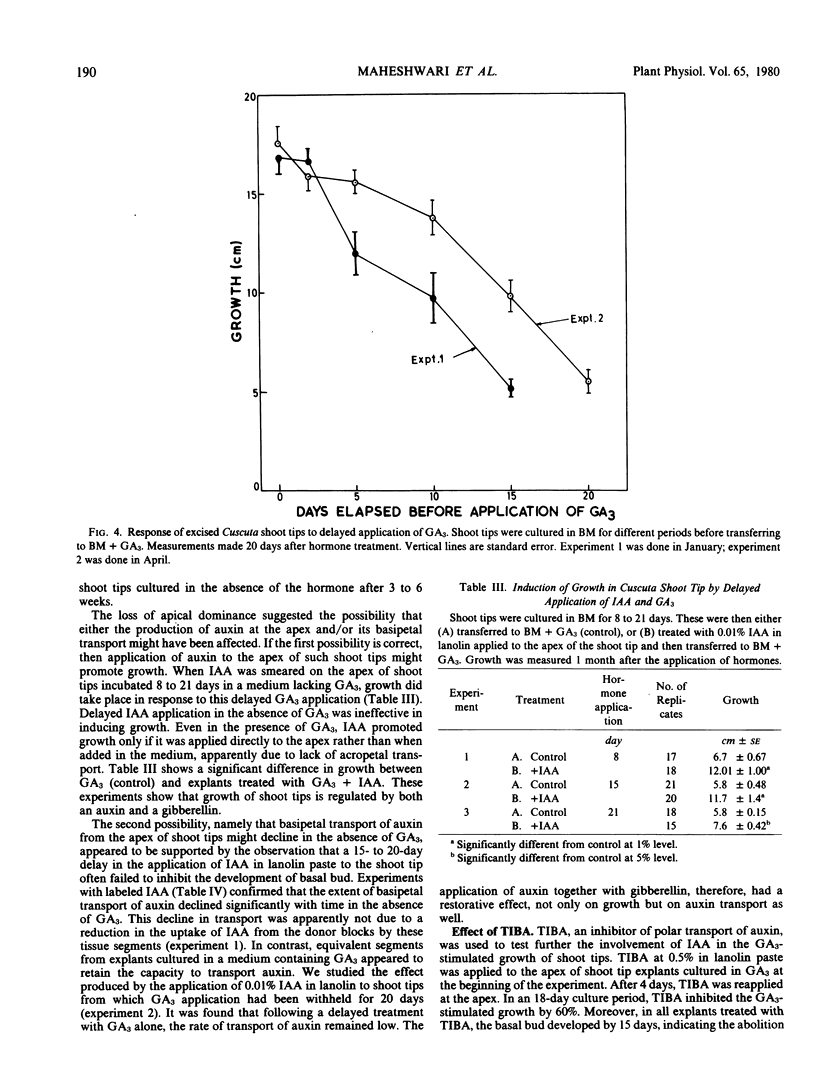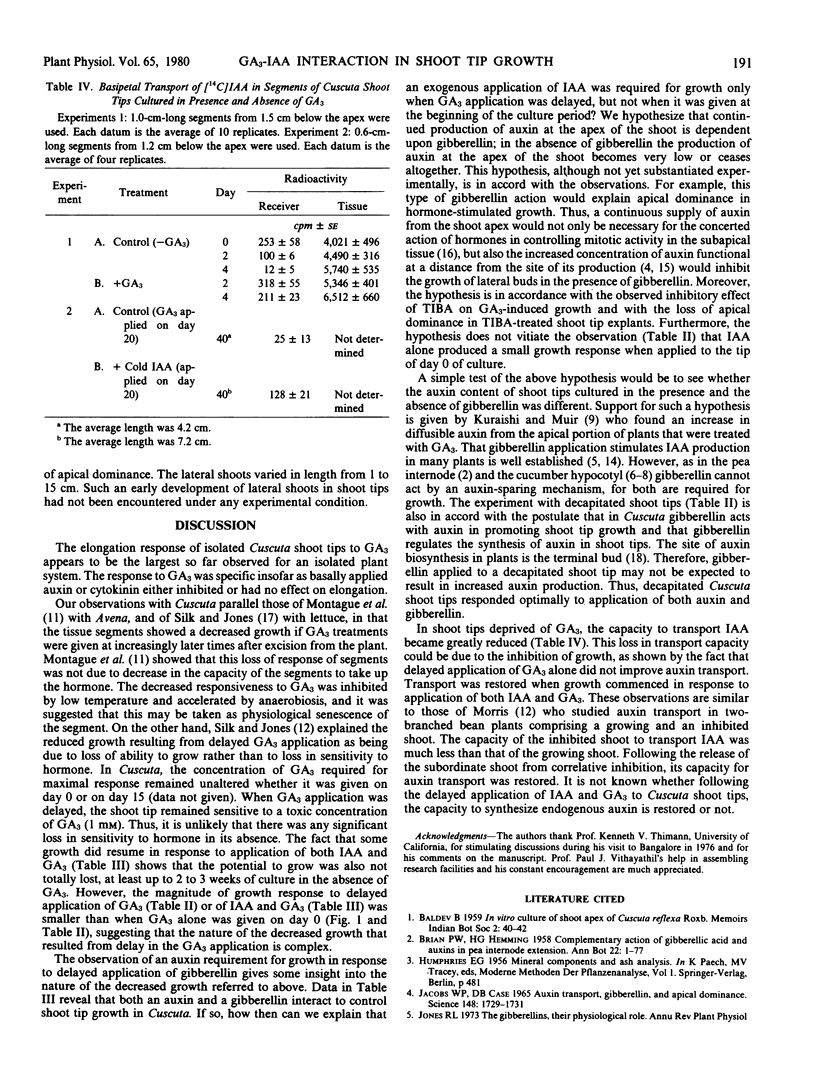Abstract
Gibberellic acid (GA3) induced a marked elongation of 2.5-centimeter shoot tips of Cuscuta chinensis Lamk. cultured in vitro. In terms of the absolute amount of elongation, this growth may be the largest reported for an isolated plant system. The response to hormone was dependent on an exogenous carbohydrate supply. The hormone-stimulated growth was due to both cell division and cell elongation. The growth response progressively decreased if GA3 was given at increasingly later times after culturing, but the decreased growth response could be restored by the application of indole-3-acetic acid (IAA) to the apex. Explants deprived of GA3 gradually lost their ability to transport IAA basipetally, but this ability was also restored by auxin application. The observations are explained on the basis that: (a) the growth of Cuscuta shoot tip in vitro requires, at least, both an auxin and a gibberellin; and (b) in the absence of gibberellin the cultured shoot tip explants lose the ability to produce and/or transport auxin.
Full text
PDF






Selected References
These references are in PubMed. This may not be the complete list of references from this article.
- Jacobs W. P., Case D. B. Auxin Transport, Gibberellin, and Apical Dominance. Science. 1965 Jun 25;148(3678):1729–1731. doi: 10.1126/science.148.3678.1729. [DOI] [PubMed] [Google Scholar]
- Leaman A. C. Control of furunculosis in impounded adult salmon. Nature. 1965 Dec 25;208(5017):1344–1344. doi: 10.1038/2081344a0. [DOI] [PubMed] [Google Scholar]
- Silk W. K., Jones R. L. Gibberellin response in lettuce hypocotyl sections. Plant Physiol. 1975 Aug;56(2):267–272. doi: 10.1104/pp.56.2.267. [DOI] [PMC free article] [PubMed] [Google Scholar]


